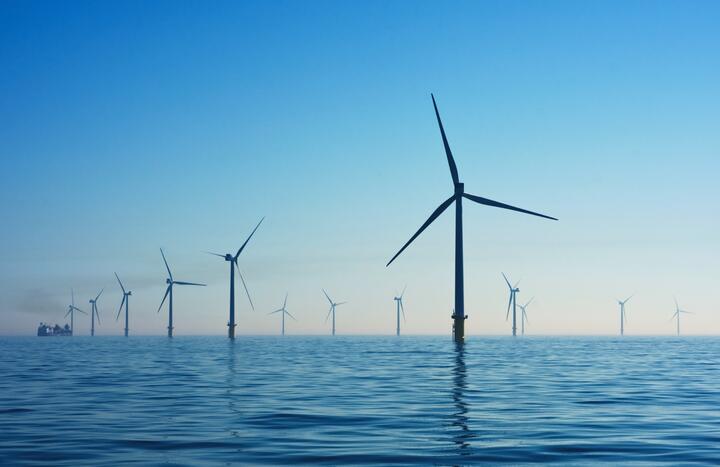£1.25m project will advance wind turbine blade production
25 April 2022The University of Sheffield Advanced Manufacturing Research Centre (AMRC) is working alongside the University of Hull on a £1.25m project to help Siemens Gamesa tackle a key challenge in the construction of offshore wind turbine blades.
Turbine blades are made using a resin which is injected into a complex mould. However, due to the length of wind turbine blades – currently over 80m and getting bigger – it can be difficult to know whether resin has dispersed evenly through the blade. If resin is not sufficiently dispersed, the blade cannot be installed and the cost implications can be substantial.
A team at the University of Hull are now working with Siemens Gamesa, with support from the AMRC Composite Centre, to address this challenge using fibre-optic sensors embedded along the length of the blade.
If successful, it could have significant cost and efficiency benefits for the offshore wind sector.
Professor Jim Gilbert, Professor of Engineering at the University of Hull, said: “We are delighted to have secured this significant new funding, which will enable the continuation of a successful partnership with Siemens Gamesa.
“As the offshore wind energy sector continues to accelerate, finding solutions to challenges such as this will be essential to ensure the UK can meet its ambitious net zero targets. This project builds on the University of Hull’s reputation as an expert in low-carbon energy, technology and sustainability, and also as a key stakeholder in the Humber region.”
Fibre-optic sensors installed along the length of the turbine blade will make it possible to know what is happening inside the mould as resin is injected - something which is very difficult using conventional sensors. The sensors will be able to monitor the temperature of the resin, how it is flowing along the blade, and whether it is curing at the rate it is expected to.
Dr Clara Frias, Head of the AMRC Composite Centre, said: “If the UK is to achieve its goal of reaching net zero by 2050, we will need to harness the renewable energy sources at our disposal in the most efficient and productive way possible. Embedding fibre-optic sensors along the length of the turbine blade will give us valuable data, from which we can fully understand the wind turbine blade production process and how to improve it.
“Through this project, the AMRC, University of Hull and Siemens Gamesa can together boost offshore wind production, and ensure offshore renewables are central to the UK’s future energy mix.”
With a total research value of £1.25m, £1m of funding has been provided by the Engineering and Physical Sciences Research Council (EPSRC) for the project which will be led by the University of Hull and supported by the University of Sheffield AMRC and Siemens Gamesa Renewable Energy in the UK and Denmark.
It is a continuation of a successful wider project called Prosperity Partnership – which also brings in Durham University and Ørsted.
Professor Gilbert added: “This project builds on the substantial investment the university has made in Aura, cements the relationship with a key industry partner and establishes a new link with the AMRC in Sheffield.
“Collaboration, which is a key part of Aura’s ethos, is fundamental to the success of this bid: it brings people together across the University of Hull but also strengthens the long-term relationships developed with industry and academic partners.”
One of the reasons fibre-optic sensors are so important is they must be able to withstand the lightning strikes and storms offshore wind turbines encounter while operational.
The project - titled ‘Heterogeneous Fibre Optic Sensor Arrays to Monitor Composite Manufacture’ - is led by Professor James Gilbert of the Department of Engineering and Aura, along with Dr Howard Snelling in Physics and Mathematics and Dr Rob Dorrell in the Energy and Environment Institute. Dr Clara Frias and Dr Kevin Kerrigan, senior technical fellow in the AMRC Composite Centre, will be Co-Principal Investigators from the University of Sheffield AMRC, part of the High Value Manufacturing Catapult.
The work will extend research started as part of the £7.6m EPSRC/industry funded Prosperity Partnership: A New Partnership in Offshore Wind and will apply the approach to improve the quality of complex composite structures such as wind turbine blades.
For more details on the AMRC Composite Centre's capabilities and to get in touch with the team, click here.



